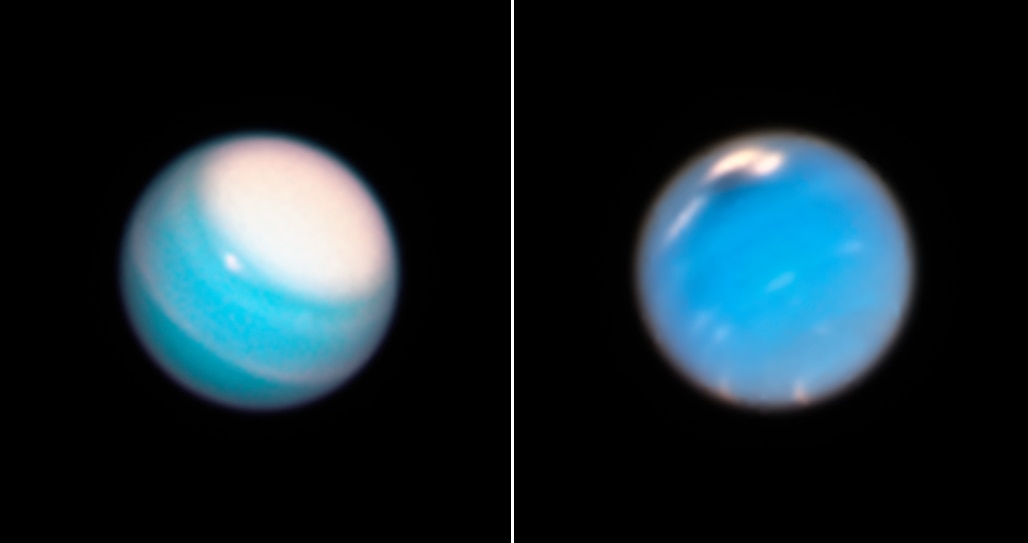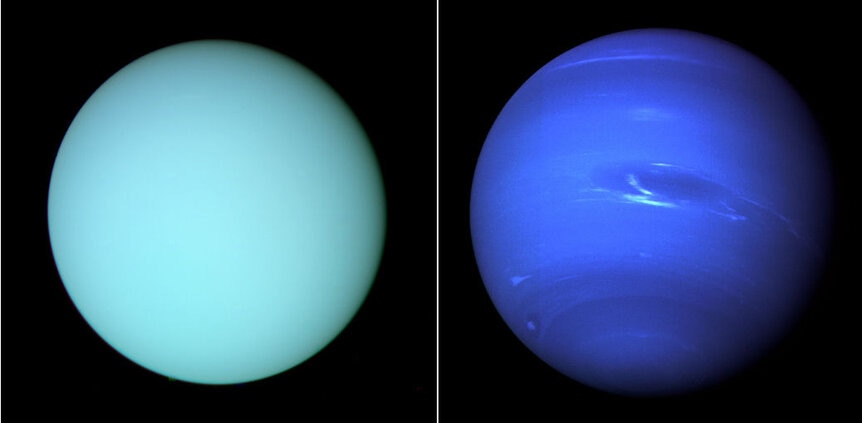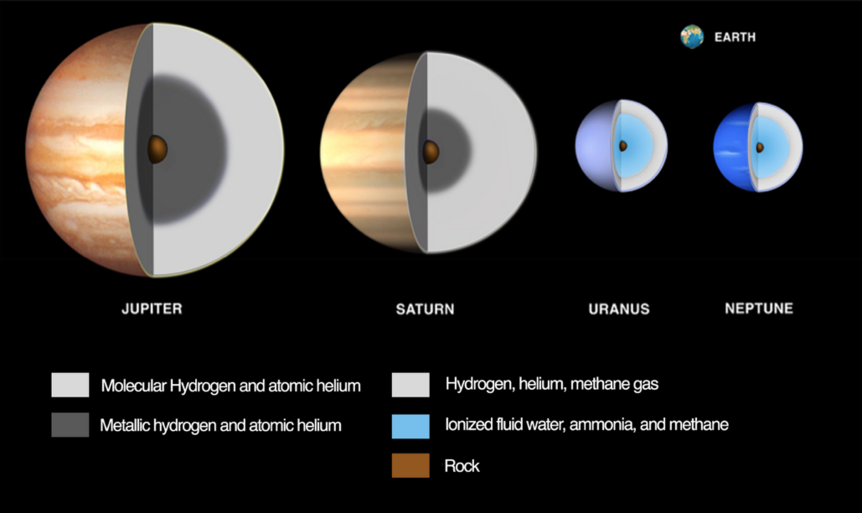Create a free profile to get unlimited access to exclusive videos, sweepstakes, and more!
"And what is this newfound love for the ice giants?"

Uranus and Neptune are a long way away.
Think of it this way; Uranus is four times the diameter of Earth, yet so far away that even under the very best of circumstances it’s barely visible to the naked eye. Neptune is just a hair smaller than Uranus, but at half again farther away yet you need binoculars at least to spot it.
In real numbers Uranus is about 3 billion kilometers away, Neptune 4.5. That’s a lot of kilometers.
So seeing them up close, getting details on their appearance, is hard. We had nothing but the fuzziest of images from Earth before the Voyager 2 flybys in 1986 and 1989. And those images from the spacecraft, while stunning, were static, showing us only what those massive planets looked like at that time. As we know from Saturn and Jupiter, all kinds of changes can take place in the thick atmospheres of these giant planets over the course of mere weeks if not years.
That’s why scientists have turned to telescopes like Hubble; while there are quite a few proposals to observe these planets, there’s one called OPAL — Outer Planet Atmospheres Legacy — that observes these planets once per year or so, when Earth is closest to them in their respective orbits. This gives the highest resolution images possible for astronomers to study… and what they find is always a surprise.
That is Uranus (left) and Neptune (right) seen by Hubble in November 2018. Uranus was about 2.8 billion km from Earth at the time, and Neptune about 4.4 billion km. They both look, well, different.
The most obvious thing about Uranus is that its north pole is covered with a gigantic white cap of clouds, reaching well down in to mid-latitudes. It’s not clear what caused this to form, but it must have to do with Uranus’ weird tilt. Unlike Earth, which has a spin axis tilted by about 23.5° to its orbit, Uranus is tipped over on its side, inclined by 98°! This means its north pole gets direct sunlight shining nearly straight down on it for most of the summer… and mind you, its summer is 21 years long! It’s midsummer now there, so this must be driving the polar cloud formation somehow.
Uranus is typically pretty featureless, but in the Hubble image you see thin bands wrapping around the planet, and a bright spot near the polar cap; that’s likely a methane ice cloud.
Neptune also has interesting features, including a huge dark spot in its southern hemisphere. One of these was spotted in the Voyager images — called the Great Dark Spot, it was the size of Earth! — and Hubble has seen several in the past 25 years or so. This one is roughly 10,000 km across (twice the width of the continental US). These storms are high pressure systems, and are weirdly cloud-free in their interiors (such storms on Saturn and Jupiter tend to be cloudy). They form in the summer months and probably have something to do with air circulation deep inside the planet.
The bright clouds around it are likely due to winds circulating around the spot, which are lifted up by the high-pressure ridge. As they rise, they cool, and ice like methane can form. We see similar features on Earth, called orographic clouds, as winds move up mountain slopes. I see them literally out my window in Colorado all the time, and it’s weird, yet somehow comforting, to know that same physics works at the outer edge of our planetary system.
I’m glad astronomers are monitoring these two planets. They’re weird. Unlike Jupiter and Saturn, which we call gas giants, Uranus and Neptune have thick mantles rich with methane, ammonia, and water — planetary scientists call these “ices”, so we call these two planets “ice giants”. They behave differently than their bigger siblings, and are as well worth study as any planet.
It’s too bad we don’t have any current planetary space missions designed to look at them up close over a long period of time! In 2017 NASA put together a group to study possible mission concepts (led by Amy Simon, the lead on the OPAL program), and hopefully this will mean someday we’ll get a spacecraft that can orbit one or both of these strange worlds. I would dearly love to see a Cassini-class mission dedicated to studying these frosty giants, so they will no longer be shrouded from our view.
If we do, I hope it’s named Heimdall.





























